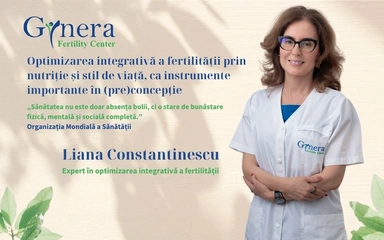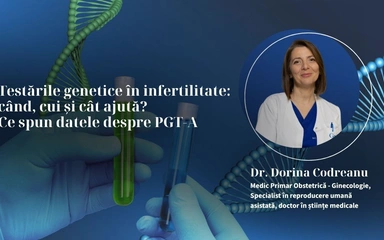Implantation failure in IVF
A stage of the journey, not an end of the road

A negative result after the embryo transfer (ET) went so well and the embryo looked like a perfect ten is difficult to understand and painful. Often rationality is blocked by the shock of finding out the result, and the questions are overwhelming and inevitable:
“Where was I wrong? Should I do further investigations? Will I ever get a good result?” Avoid an immediate discussion and decision-making and allow time to soften the emotions.
If you can see the big picture, you will get through each stage more easily knowing what to expect and what you can do in the future.
What is the root cause of failure, the EMBRYO or the ENVIRONMENT in which it implants itself?
Recent years have brought numerous scientific evidence, and the answer became obvious - the Embryo. How was this conclusion reached?
After 3 transfers of genetically tested and euploid (with normal number of chromosomes) embryos, the success rate is over 95%. Implantation failure due to other causes is rare, under 5% of the cases
If the embryos are not genetically tested, 5 to 10 untested embryos may be needed to equal 3 euploid embryos. The reason? Most embryos considered to be of good quality and looking good under the microscope on the ET day actually have various defects, especially after the age of 37-38 years.
Which are the other factors that can affect the chance of success?
Thickness and appearance of the endometrium
Hormonal balance during the period of implantation
Lifestyle: smoking, sedentariness, excessive level of stress
Thyroid function, certain autoimmune diseases
Technical difficulties in ET – altered uterine anatomy, contractions, bleeding
Most of the factors that can affect implantation are monitored, visible, controllable.
However, we cannot see and control the embryo in the uterus. Many embryos develop abnormally, and others fail to make connections with the uterus to feed. These embryos look perfect in the lab, but are later discarded, either before the pregnancy test or in the first weeks after the test. This may be a natural selection process that prevents abnormal embryos from evolving.
If the embryo has good potential, it can also fix itself in an unfavourable, even hostile environment - fallopian tube, cervix, abdomen. This is how ectopic pregnancies occur, which can evolve outside the endometrium.
When do we talk about “recurrent implantation failure” in IVF?
For fertile couples, it takes several months to naturally achieve a viable pregnancy. We are not concerned after the first failures, but only after 6 to 12 months of attempts. In the case of IVF, we also expect that many embryos will not implant themselves, especially those that have not been genetically tested. Good evolution up to the time of embryo transfer does not confirm that the embryo is healthy or capable of implantation and long-term evolution. How many failures are “within the expected limits” and when should we take action? Extensive international studies show what are the expectations based on age, the determining factor of oocyte and embryo quality:
According to the current international guidelines, we define “Recurrent Implantation Failure” when we do not achieve pregnancy after several ETs that together should have conferred a cumulative chance of success of 60%. With non-genetically tested embryos, at the age of 40 years, this chance is reached after 6 ETs. For more accurate estimates, there are professional calculators such as IVFpredict.com
It estimates the customized chance of success taking into account other factors besides age - duration and cause of infertility, source of oocytes - own or donated, type of medication, etc.
Example, IVFpredict.com:
36 years old, infertility of 3 years due to tubal cause, no previous pregnancies or IVF, no PGT 27.6% = Chance of pregnancy at first ET
47% = Chance of pregnancy after 2 ETs
62% = Chance of pregnancy after 3 ETs
72% = Chance of pregnancy after 4 ETs
80% = Chance of pregnancy after 5 ETs
Why don't we genetically test all embryos?
Pre-implantation genetic testing (PGT) is not routinely done because it also has disadvantages: it does not give a 100% accuracy of the result and it is invasive to the embryo, some cells having to be extracted via biopsy. However, PGT may be a good selection option before ET in special situations, such as advanced age, high-risk cases, genetic diseases in the family or after repeated failures.
After how many implantation failures we do intervene?
In 2023, ESHRE (European Society of Human Reproduction and Embryology) developed an updated guideline for the management of recurrent implantation failure based on updated studies.
After how many ETs should we take measures? Which measures may help and which ones have no proven benefits? The ESHRE 2023 Guideline answers to many of these questions. The ESHRE recommendations are considered to be the current best practice, based on scientific evidence, not influenced by personal opinions, commercial interests, subjective factors or coincidence.
What investigations are recommended in case of repeated implantation failure?
Recommended:
❖ Lifestyle reassessment
❖ Reassessment of endometrial thickness
❖ Evaluation of APA antibodies and antiphospholipid syndrome
Can be taken into account:
❖ Karyotype - both partners
❖ 3D ultrasound / Hysteroscopy
❖ Endometrial function tests (e.g. ERA - Endometrial Receptivity Analysis)
❖ Chronic endometritis testing (e.g. ALICE - Analysis of Infectious Chronic Endometritis)
❖ Thyroid function test
❖ Serum progesterone level (late follicular and luteal phases)
Not recommended:
❖Vitamin D level test
❖ Assessment of the microbiome
❖ Peripheral or uterine natural killer (NK) cell testing
❖ Assessment of uterine T lymphocytes
❖ Blood cytokine level testing
❖ HLA-C compatibility assessment
❖ Assessment of mtDNA (mitochondrial DNA)
❖ Sperm DNA fragmentation test / FISH (Fluorescent In-Situ Hybridization)
What investigations are recommended in case of repeated implantation failure?
Recommended:
❖ Reassessment of oestradiol treatment if the endometrium is thin
❖ Genetic counselling, possibly PGT, if there are chromosomal abnormalities
❖ Lifestyle optimization
Can be taken into account:
❖ Antibiotics, if chronic endometritis is diagnosed
❖ PGT-A (Preimplantation Genetic Testing for Aneuploidy)
❖ ET in the blastocyst stage, if previously was performed earlier
Not recommended:
❖ Treatment of vitamin D deficiency if detected during investigations
❖ Endometrial abrasion (Endometrial scratching / injury)
❖ Administration of G-CSF (Granulocyte Colony-Stimulating Factors - e.g. Zarzio, Filgrastim, Neupogen)
❖ Intralipid or Immunoglobulin Infusion (IVIG)
❖ Intrauterine infusion of autologous PBMC (Peripheral Blood Mononuclear Cell), PRP (Platelet-Rich
Plasma) or hCG (Human Chorionic Gonadotropin)
❖ Low molecular weight heparin (e.g. Clexane, Fraxiparine)
❖ GnRHa (Gonadotropin-Releasing Hormone agonist) (e.g. Diphereline, Decapeptyl) or aromatase
inhibitors (Letrozole) as pretreatment
❖ Assisted hatching
Why some measures are not recommended, although they have been or are still used experimentally?
For these measures, the benefit has not been proven, in some cases there are also risks/adverse reactions.
Take Home Message
Implantation failure is not an end of the road. With persistence and confidence, you can succeed.
Each new embryo transfer brings you one step closer to this precious moment.
Scientific resources:
1. ESHRE Good Practice Recommendations on RIF (Recurrent Implantation Failure) - Human Reproduction Open, 2023
2. Does recurrent implantation failure exist? Prevalence and outcomes of five consecutive euploid blastocyst transfers in 123 987 patients -
Gill et al. ASRM annual meeting 2023



